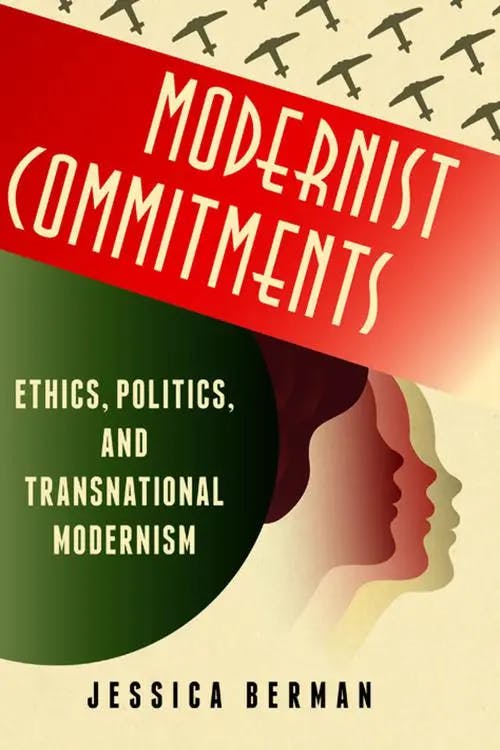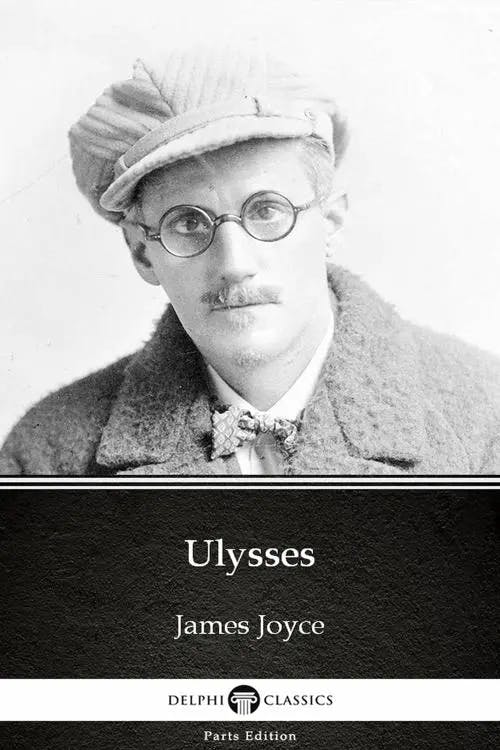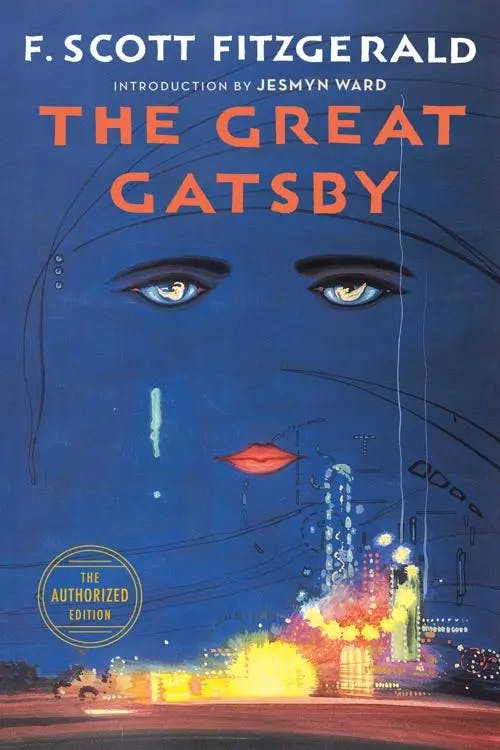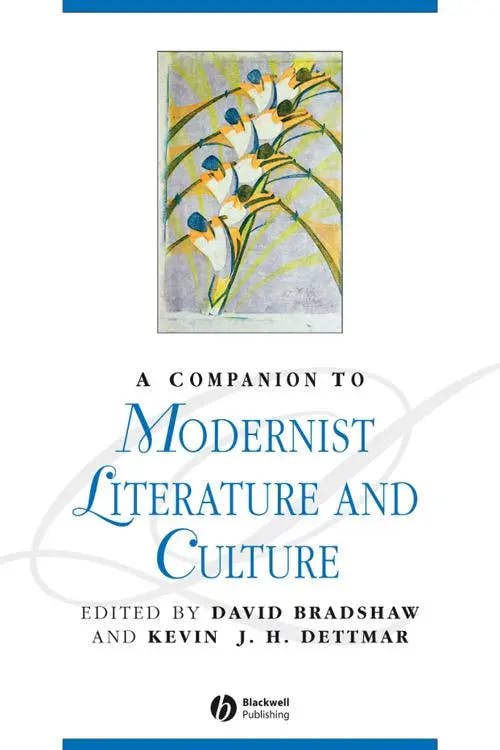What is Modernist Literature?
PhD, Media Arts and English Literature (Royal Holloway, University of London)
Date Published: 25.07.2023,
Last Updated: 01.02.2024
Share this article
Defining modernism and modernity
Modernist literature is the writing that instigated and responded to the culture of modernity. Questions of what modernity is or was and its convergence with modernism are still being unravelled and challenged in criticism today. In her article “Definitional Excursions: The Meanings of Modern/Modernity/Modernism” (2001), Susan Stanford Friedman describes these slippery terms as “constitut[ing] a critical Tower of Babel, a cacophony of categories that became increasingly useless the more inconsistently they are used”. Entire books have been dedicated to modernism’s manifold contradictions, such as Paradoxy of Modernism (2008) by Roland Scholes, who explores the tensions between old and new, emotion and impersonality, and high and low. Interpretations of modernism differ depending on what discipline you look to, and Friedman reminds us that such “[d]efinitional excursions” are always “fictionalizing processes, however much they sound like rational categorization” (2001), where each definition simply reveals the interests and standpoint of the person putting it forward.
For the purposes of this introduction, we can—whilst treading carefully and remaining wary of totalizing definitions—think of modernity as the social conditions or contexts that developed in response to modern industrial capitalism in Western Europe. Constituted by many interwoven skeins and spools, modernity is a rich tapestry formed by many different threads: the rapid advancement of technology; urbanization; the expansion of railway networks, heightened mobility and international transport or migration; early feminism; scientific innovation; secularization; new media like the cinema image; mass communication; shifting ideas around sex, sexuality, intimacy, and gender; the 1918 influenza epidemic; Sigmund Frued’s psychoanalytic theories and ideas of the subconscious; the watershed trial of Oscar Wilde and legislation around homosexuality; war and political turbulence. If modernity is a tapestry, modernism is the response to witnessing such a tableau. Modernism is the global literary, artistic, musical and architectural responses to the cultures of modernity.
Of course, as experiments with modernist literature proliferated, modernism also shapes the conditions of modernity. Therefore, two engage in a catalytic and contentious exchange. Jessica Berman helpfully describes modernism as,
a constellation of rhetorical actions, attitudes, or aesthetic occasions,
Jessica Berman
a constellation of rhetorical actions, attitudes, or aesthetic occasions,
where instead of a formal set of techniques, modernism—like a starry constellation at night—changes, depending on your critical perspective or vantage point.
Literary modernism’s core period of production
Emerging around the late nineteenth and early twentieth century, modernism also evades neat periodization. Its beginnings and endpoints are both contested: some studies see modernist experimentation ending with the Second World War in 1945 (Hanna, Key Concepts in Modernist Literature, 2008); others like Marjorie Perloff, Malcolm Bradbury and James McFarlane suggest that it ceased in 1930 (Perloff, “Epilogue: Modernism Now”, 2006; Bradbury and McFarlane, Modernism, 1976); Peter Childs suggests the end of “classic modernism” occurred one year earlier in 1929, and sees the 30s as the start of something else (Modernist Literature, 2011). More recent scholarship has expanded modernism’s temporal remits, as Douglas Mao and Rebecca Walkowitz explore in their article “The New Modernist Studies” (2008): a broadening that encompasses work from the mid-1900s and after the “core period”, beyond the middle of the twentieth century. This querying of modernism’s definitional edges not only concerns temporal issues, but also spatial (looking beyond Anglo-American modernist experimentation) and vertical (encompassing high and low cultures) issues too, inviting exciting explorations into when, where and what can be considered modernist literature.
Characteristics of modernist literature
In the face of such change—what Bradbury describes as “the scenario of chaos” (1976)—writers attempted to understand and navigate the turbulent and tense world around them. They harnessed language to engage with big, existential questions and to represent the small, quotidian elements of modern life. Writers responded to modernity in many different and complex ways, experimenting with form, style and themes, ranging from the incredible 12 volume novel sequence Pilgrimage (1915 [2002]) by Dorothy Richardson, to poems that are just a handful of words long, like “The Red Wheelbarrow” (1938) by William Carlos Williams. Many different modernist movements or groups formed, which often encompassed or fostered certain literary styles or themes, such as the African-American experience and folk traditions in the Harlem Renaissance, the sparse clarity celebrated in Imagism, or illogical imagery of Surrealism, or the nonsense poems of Dada.
Although modernist writers often held contradictory ideologies or aesthetics, Ulrika Maude summarizes: “[l]iterary modernism is characterized by dazzling experimentation, perplexing narrative and poetic form” (“Introduction”, The Bloomsbury Companion to Modernist Literature, 2018). In her description of modernist literature, Rita Felski includes “an aesthetic self-consciousness, stylistic fragmentation, and a questioning of representation” (The Gender of Modernity, 1995), and Marianne DeKoven also identifies “simultaneity, juxtaposition, or ‘montage’ [and] ‘fragmentation’, paradox, ambiguity, and uncertainty”, along with “the demise of the integrated or unified subject” (Rich and Strange, 1991). What follows is a non-exhaustive list of some of the literary characteristics that are typically associated with stylistic modernist play.
Stream of consciousness
A stream of consciousness is a narrative technique used in fiction to capture and convey a character’s inner thought process or interior monologue, that attends to the unbroken flow—like a stream or a river—of consciousness and the impressions (both internal and external) that impact and affect it. These can be memories that might burst into the middle of a sentence; or the visual, auditory, haptic, or sensual happenings that can interrupt the progression of rational thought. Julian Hanna differentiates between interior monologue—which may relate to any character’s thoughts on the page—and stream of consciousness, where the latter is,
the more experimental style of representing consciousness in an apparently raw or unedited form, sometimes sacrificing intelligibility and conventional grammar in the process. (2008)
Julian Hanna
the more experimental style of representing consciousness in an apparently raw or unedited form, sometimes sacrificing intelligibility and conventional grammar in the process. (2008)
Many modernist writers play with this technique. It can be seen in William Faulkner’s The Sound and the Fury (1929, [2009]), Virginia Woolf’s Mrs Dalloway (1925 [2022]) and The Waves (1931 [2001]). One of the most famous and oft-quoted examples are the final lines of James Joyce’s Ulysses (1922 [2017]), where Molly Bloom remembers her husband Leopold’s proposal in a flowing burst of unpunctuated free association:
and I thought well as well him as another and then I asked him with my eyes to ask again yes and then he asked me would I yes to say yes my mountain flower and first I put my arms around him yes and drew him down to me so he could feel my breasts all perfume yes and his heart was going like mad and yes I said yes I will Yes.
James Joyce
and I thought well as well him as another and then I asked him with my eyes to ask again yes and then he asked me would I yes to say yes my mountain flower and first I put my arms around him yes and drew him down to me so he could feel my breasts all perfume yes and his heart was going like mad and yes I said yes I will Yes.
Making it new
Ezra Pound’s declaration of “make it new” is often presented as modernism’s mantra. Inflected with Imagist notions of the rejection of what came before, Pound’s rally embraced the contemporaneity of the present moment, biting at the future (Make It New, 1935). Many modernist authors engaged with this sense of innovation and rupture.F. T. Marinetti, who founded the Futurist movement stated “[w]e want no part of it, the past” (Manifesto of Futurism, 1909 [2016]); Woolf’s similarly wrote “On or about December 1910, human character changed” (Mr. Bennett and Mrs. Brown, (1924 [2019]), acknowledging the difference between past and present; and T. S. Eliot believed that “[t]he perpetual task of poetry is to make all things new. Not necessarily to make new things” (“Tradition and the Practice of Poetry”, 1985), placing the emphasis on experimentation as opposed to outright originality.
Modernist literature—with its experimental form, jagged edges and intense interiority—looks, in many ways, like a break from Victorian literature, and novelists like George Eliot and Charles Dickens. However, as with much modernist literature, there is a tension between a desire for rupture from the past and reconciliation, what Maude identifies as a “nostalgic yearning for a lost and at times primitive past” (2018). Friedman reminds us that: “Modernism requires tradition to ‘make it new.’” (2001). Even Pound’s catchphrase was not new. As Kevin Dettmar writes, Pound had “stolen it from a Chinese emperor, who’d had inscribed it on his bathtub. ‘Make it new,’ it would seem, was hardly a new idea” (2008). Just as modernist literature “makes it new”, blasting forward with experiment, innovation and play, it also looks back to the past. This thematic tension undercuts much of modernist literature, and is perhaps most famously expressed in the last lines of F. Scott Fitzgerald’s The Great Gatsby (1925 [2003]):
Gatsby believed in the green light, the orgastic future that year by year recedes before us. It eluded us then, but that’s no matter— tomorrow we will run faster, stretch out our arms farther.… And one fine morning——
So we beat on, boats against the current, borne back ceaselessly into the past.
F. Scott Fitzgerald
Gatsby believed in the green light, the orgastic future that year by year recedes before us. It eluded us then, but that’s no matter— tomorrow we will run faster, stretch out our arms farther.… And one fine morning——
So we beat on, boats against the current, borne back ceaselessly into the past.
Temporality
The experience of time within modernity was shifting: the introduction of Greenwich Mean Time (GMT) in 1884 meant both public and private time was regulated. The popularization of attractions and spaces like the cinema and dance-hall allowed for leisure or pleasure filled pastimes; the growth of the railway network reduced the time it took to travel long distances; and the invention of the telephone in 1876 condensed the time it took to communicate. This process is known as time-space compression. Alongside these advances, Albert Einstein's 1916 General Theory proposed time as relative. Time was thus being experienced and conceived in different ways. The experience of time and the querying of such notions are significant characteristics of modernist literature, with many writers contorting linear notions of temporality.
Kate Haffey writes that modernist literature “is in some ways a literature of incoherence, a literature that continually breaks the rules that make narrative cohere” (Literary Modernism, Queer Temporality, 2019). Indeed, often time is twisted, where traditional narratological tropes such as plot, and discrete ideas of a beginning, middle, and end are all undermined. This can be done in a number of different ways, such as: shifts in time, loops, tangents, big leaps into the future, or flashbacks where past memories take over the narrative, as in Marcel Proust’s Swann’s Way (2017), where involuntary memory is triggered by a madeleine and a cup of lime blossom tea. Subverting a stable perspective, point of view, and linear characterization in the text also poses temporal issues. Many modernist works also subvert notions of closure or finality. For example, the ending of Voyage in the Dark (1935 [2019]) by Jean Rhys sees Anna wake from an abortion, where she drifts in and out of dreams in a rhythmic, sleepy stream of consciousness:
I lay and watched it and thought about starting all over again. And about being new and fresh. And about mornings, and misty days, when anything might happen. And about starting all over again, all over again… (1935 [2019])
Rhys’s last line drifts off ambiguously into what could be peaceful sleep, the end of her trail of thought, or death, leaving no sense of clarity or finality to the book’s end, thus playing with ideas of structure, time, and the novel.
Other texts like Joyce’s Ulysses or Woolf’s Mrs Dalloway play with time in other ways: both of these depict the course of a day for their respective protagonists, Leopold Bloom in Dublin and Clarissa Dalloway in London. For Clarissa, Big Ben’s chimes resound throughout her day, “an immortal ode to Time” (Mrs Dalloway, 2013) that looms over the text, ticking with timely questions about mortality.
Fragmentation
As a literary technique, fragmentation works against notions of cohesion, linear narratives, totality, or wholeness. Instead, it veers towards disintegration and dissonance. Hanna points towards an oft-quoted line from T. S. Eliot’s The Waste Land as not only “one of the most famous lines of modernist literature”, but “also one of the most telling” (2008). The line reads: “[t]hese fragments I have shored against my ruins” (1922 [1998]), and is surrounded by further pieces of fragmented text. The entire poem itself is conveyed in anxious, alienated fragments. Odd imagery, references, allusions, intertextual fragments, and disembodied voices come together to form Eliot’s depiction of post-war London. As Maude observes, “modernist texts embody and perform the condition of modernity in their disparate, disjunctive, fragmented and often incongruently despairing formal qualities” (2018). The fragmented poems and prose speak to the fractures and fissure lines of modernity, wreaked by the trauma of war, political uncertainty, and economic instability.
Fragmentation also engages with modernist notions of selfhood, identity, and consciousness. The idea of the unified sense of self was being rethought and challenged, where in Mrs Dalloway, Clarissa feels a sense of duality and ontological fragmentation that she hides from the outside world: she “had tried to be the same always, never showing a sign of all the other sides of her” (2013). In Langston Hughes’s “Elevator Boy” (Collected Poems, 1994), indented lines are used to convey internal thoughts in the poem, in addition to the speaker’s voice; in “Afro-American Fragment” (1994), Hughes overtly engages with the fragmentation of Black diaspora.
Ambiguity
A sense of uncertainty or ambiguity can be seen in many modernist texts. Whether this is at a textual or thematic level, ambiguity works in tandem with the fragmented, unfinished, and paradoxical nature of modernism. For example, Kenneth Graham identifies an “epistemological ambiguity” within Joseph Conrad’s Heart of Darkness (1899 [2010]), around the very “idea that the act of communication in words is reliable” (“Conrad and Modernism”, 1996). The ending of Djuna Barnes’s Nightwood (1936 [2015]) resists any sense of stable meaning or truth, leaving the reader with an ambiguous and unsettling scene. Robin is sleeping in a chapel near her former lover Nora’s house and is awoken by Nora’s dog barking:
Then she began to bark also, crawling after him—barking in a fit of laughter, obscene and touching. [...] He ran this way and that, low down in his throat crying, and she grinning and crying with him; crying in shorter and shorter spaces, moving head to head, until she gave up, lying out, her hands beside her, her face turned and weeping; and the dog too gave up then, and lay down, his eyes bloodshot, his head flat along her knees. (Barnes, Nightwood, 2007)
The ambiguous content and language here resists finite knowledge, rationale, or understanding: it is unclear whether Robin is fighting, playing, or—as the “obscene and touching” motions imply—mating with the dog (Barnes, 2007). Barnes raises just as many questions as she leaves unanswered, leaving Nightwood unresolved and ambiguous.
Jesse Matz argues that ambiguity attends to modernist literature’s morality, too. Matz notes how modernists like D. H. Lawrence were,
keen to free the novel from positive ethical responsibilities, expressing the prevailing mood when they described the novel as a form for direct, visceral, passionate engagement rather than moral advocacy [...] Moral certainties would become unavailable as the ambiguity of human motivation, the relative nature of goodness, and even the savagery of human appetites would have the last word. (Matz, 2008)
Edited by David Bradshaw & Kevin J. H. Dettmar
keen to free the novel from positive ethical responsibilities, expressing the prevailing mood when they described the novel as a form for direct, visceral, passionate engagement rather than moral advocacy [...] Moral certainties would become unavailable as the ambiguity of human motivation, the relative nature of goodness, and even the savagery of human appetites would have the last word. (Matz, 2008)
In a world fraught with questions about how to live, of good and evil, prompted by the horrors of modern warfare, modernist authors delved into the gray areas within their fiction.
Intertextuality
Modernist literature often borrows, weaves in, and alludes to other texts to further shape its own meanings. These can often be layered, complex, or obscure references, as in Eliot’s The Waste Land, which has an accompanying “notes” section to accompany the allusions. As Hanna notes, this resists a sense of closure that might come with finishing a text, as the intertextuality demands further engagement (2008). Hanna also observes that this may be where part of modernism’s “difficulty” arises: intertextuality can become,
a form of gate keeping, an exercise in exclusivity. This has long been the accusation levelled against modernism: the bar is set too high, suggesting a desire on the author’s part for an extremely select readership, or no readership at all. (2008)
Julian Hanna
a form of gate keeping, an exercise in exclusivity. This has long been the accusation levelled against modernism: the bar is set too high, suggesting a desire on the author’s part for an extremely select readership, or no readership at all. (2008)
Modernist literature often complicates easy answers. Intertextuality also allows for personal, unfinished, and multiple interpretations of a piece of work, where connections abound between and beyond textual echoes.
H.D. weaves in Greek myth to her poetry and prose, as in her first Imagist poems like “Epigram” (1913), or in Helen in Egypt (1961), which recasts Greek and Trojan tales through the perspective of Helen, imagining a world where Helen never went to Troy. Greek myth is also harnessed in Joyce’s Ulysses, where the 18 episodes play on each of the sections within Homer’s Odyssey (2014), and Leopold’s day-long wander around Dublin’s streets are paralleled with Odysseus’ epic ten-year journey to return home to Ithaca.
Modernism now?
After the proliferation of modernist experimentation in the early twentieth century, Tyrus Miller suggests the advent of an interwar “late modernism” (Late Modernism, 1999), where Barnes and Samuel Beckett sit; while Kristin Bluemel argues for the consideration of intermodernists that worked in mid-twentieth-century Britain (Intermodernism, 2011), who are often neglected. Postmodernism teased out and fragmented modernist concerns into absurdity and playful experiment at the end of the twentieth century.
The progression of these movements and the history of modernism as a field of study are interesting and problematic tales in themselves. As Sean Latham and Gayle Rogers map out in Modernism: Evolution of an Idea (2015), the story of modernism that was first told was one that enforced a narrow canonicity and the idea of the “Men of 1914” (of Joyce, Eliot, Pound and Wyndham Lewis) that excluded and forgot many queer modernists, women, and people of colour. Vital revisionist scholarship has retrieved many works, in an ongoing process of expansion that brings us to new modernist studies today (Mao, 2021). As the field of study of modernist literature changes, dialogues about the trouble with modernism (Luke Seaber and Michael Shallcross, “The Trouble with Modernism”, 2019), and questions about its future have emerged, where Paul Saint-Amour pictures the critical field “as a group of travelers gathered around dwindling embers”, offering “maybe the fire was never the point, the dwindling having been the real occasion for the gathering” (“Weak Theory, Weak Modernism”, 2018).
So, if there are New Modernist Studies and we are post-post-modernism, where are we now? Are we, as Robin van den Akker, Alison Gibbons and Tomotheus Vermeulen suggest, in a period of “metamodernism” (Metamodernism, 2017)? Did we ever leave modernism or modernity? As Friedman writes in Planetary Modernisms (2015), “[o]nce again, modernity is reinvented. The New is Now. Once again”. She invites us to think of modernism outside of the long twentieth century and on a global–or planetary—scale, challenging modernism’s eurocentricity, and reminding us that, “[l]ike the modernity of which it is a part, modernism is also multiple, polycentric, relational, and recurrent” (Friedman, 2015). She identifies modernisms that developed before 1500, and argues that belated expressions and iterations are emerging today.
What is clear is that modernism’s afterlives are still felt profoundly in our contemporary moment. Whether it is new literary modernisms forming today on a planetary scale; or in archives, with scholars retrieving long forgotten modernist texts, challenging notions of canonicity; or contemporary writers reimagining twentieth-century texts like Natasha Brown’s Assembly (2021), which was celebrated as a “modern Mrs Dalloway” in The Guardian, or Kabe Wilson’s incredible project which re-used all of the words in Woolf’s A Room of One’s Own (1929, [2014]) to create a new text, Of One Woman or So by Olivia N’Gowfri (even the title is an anagram of the original text and Woolf’s name); or as intertextual fragments, as in the third season of Netflix’s The Sinner (Simonds, 2020), where lines from Eliot’s The Hollow Men (1925 [2022]) are repeated as a sinister leitmotif; or adapted to the screen themselves, as in Netflix’s Lady Chatterley's Lover (de Clermont-Tonnerre, 2022) and Passing (Hall, 2021), or biographical interpretations like Colette (2018), which explores the life of Sidonie-Gabrielle Colette, or Vita and Virginia (Button, 2018), which tells the love story of Woolf and Vita Sackville-West; or in bookshops, libraries, and classrooms, rereading or discovering modernist writers for the first time: modernism continues to interest, intrigue, inspire, and (sometimes) irk us today.
Further reading on modernist literature on Perlego
Davison, S. (2017) Modernist Literatures. Bloomsbury Publishing. Available at: https://www.perlego.com/book/2995982/modernist-literatures-pdf
Latham, S. and Rogers, G. (2021) The New Modernist Studies Reader. Bloomsbury Publishing. Available at: https://www.perlego.com/book/2106937/the-new-modernist-studies-reader-an-anthology-of-essential-criticism-pdf
Marek, J. (2021) Women Editing Modernism. The University Press of Kentucky. Available at: https://www.perlego.com/book/2655189/women-editing-modernism-little-magazines-and-literary-history-pdf
Mao, D. and Walkowitz, R. (2006) Bad Modernisms. Duke University Press. Available at: https://www.perlego.com/book/1458212/bad-modernisms-pdf
Okeke-Agulu, C. (2015) Postcolonial Modernism. Duke University Press. Available at: https://www.perlego.com/book/1458122/postcolonial-modernism-art-and-decolonization-in-twentiethcentury-nigeria-pdf
Smethurst, J. (2011) The African American Roots of Modernism. The University of North Carolina Press. Available at: https://www.perlego.com/book/538782/the-african-american-roots-of-modernism-from-reconstruction-to-the-harlem-renaissance-pdf
External resources
Davies, A. and Jenkins, L. (2007) The Cambridge Companion to Modernist Poetry. Cambridge University Press.
Garrington, A. (2013) Haptic Modernism. Edinburgh University Press.
Marcus, L. (2007) The Tenth Muse. Oxford University Press.
Marshik, C. (2015) The Cambridge Companion to Modernist Culture. Cambridge University Press.
Platt, L. (2011) Modernism and Race. Cambridge University Press.
What are the key elements of modernist writing?
When was the core period for literary modernism?
Who are some of the most famous modernist writers?
What are some examples of modernist novels?
What are some examples of modernist poetry?
What are some examples of modernist short stories?
What are some examples of modernist plays?
Bibliography
Akker, R., Gibbons, A., and Vermeulen, T. (2017) Metamodernism. Littlefield International. Available at: https://www.perlego.com/book/573700/metamodernism-historicity-affect-and-depth-after-postmodernism-pdf
Baker, H. (2013) Modernism and the Harlem Renaissance. The University of Chicago Press. Available at: https://www.perlego.com/book/1851699/modernism-and-the-harlem-renaissance-pdf
Barnes, D. (2015) Nightwood. Faber and Faber. Available at: https://www.faber.co.uk/product/9780571322862-nightwood/
Berman, J. (2012) Modernist Commitments. Columbia University Press. Available at: https://www.perlego.com/book/774892/modernist-commitments-ethics-politics-and-transnational-modernism-pdf
Bluemel, K. (2011) Intermodernism: Literary Culture in Mid-Twentieth-Century Britain. Edinburgh University Press. Available at: https://edinburghuniversitypress.com/book-intermodernism.html
Bradbury, M. and McFarlane, J. (1976), Modernism: 1890–1930. Penguin.
Brown, N. (2021) Assembly. Penguin. Available at: https://www.penguin.co.uk/books/444275/assembly-by-brown-natasha/9780241992661
Childs, P. (2011) Modernist Literature: A Guide for the Perplexed. Bloomsbury Publishing. Available at: https://www.perlego.com/book/805886/modernist-literature-a-guide-for-the-perplexed-pdf
Westmoreland, W. (2018) Colette. Bold Films, British Film Institute and HanWay Films. Available at: Netflix.
Collins, S. (2021) “Assembly by Natasha Brown Review - A Modern Mrs Dalloway”.The Guardian. Available at: https://www.theguardian.com/books/2021/jun/12/assembly-by-natasha-brown-review-a-modern-mrs-dalloway
Conrad, J. (2010) Heart of Darkness. William Collins. Available at:
https://www.perlego.com/book/670071/heart-of-darkness-pdf
DeKoven, M. (1991) Rich and Strange: Gender, History, Modernism. Princeton University Press. Available at: https://www.perlego.com/book/2574869/rich-and-strange-gender-history-modernism-pdf
Eliot, T. S. (1985) "Tradition and the Practice of Poetry, with an Introduction and Afterword by A. Walton Litz", The Southern Review. 21(4). Available at: https://www.proquest.com/docview/1291538605
Eliot, T. S. (1998) The Waste Land. Perlego. Available at: https://www.perlego.com/book/1713774/the-waste-land-pdf
Eliot, T. S. (2022) The Waste Land, Prufrock, The Hollow Men and Other Poems. Dover Publications. Available at: https://www.perlego.com/book/3277503/the-waste-land-prufrock-the-hollow-men-and-other-poems-pdf
Faulkner, W. (1995) The Sound and the Fury. Vintage Classics.
Felski, R. (1995) The Gender of Modernity. Harvard University Press. Available at: https://www.perlego.com/book/1148406/the-gender-of-modernity-pdf
Fitzgerald, F. S. (2003) The Great Gatsby. Scribner. Available at: https://www.perlego.com/book/780773/the-great-gatsby-pdf
Friedman, S. S. (2001) “Definitional Excursions: The Meanings of Modern/Modernity/Modernism” in Modernism/modernity. 8(3). Available at: https://muse.jhu.edu/pub/1/article/23422/pdf
Friedman, S. S. (2015) Planetary Modernisms. Columbia University Press. Available at: https://www.perlego.com/book/773635/planetary-modernisms-provocations-on-modernity-across-time-pdf
Graham, K. (1996). “Conrad and modernism”, in Cambridge Companion to Joseph Conrad. Ed. by Stape, J. H. Cambridge University Press. Available at: https://www.cambridge.org/core/books/cambridge-companion-to-joseph-conrad/8971D49A21D62BF3753DD780E4C7BCA9#:~:text=Book%20description,novelists%20of%20the%20twentieth%20century.
Haffey, K. (2019) Literary Modernism, Queer Temporality. Springer International Publishing. Available at: https://www.perlego.com/book/3493017/literary-modernism-queer-temporality-eddies-in-time-pdf
Hall, R. (2021) Passing. (2021)
Hanna, J. (2008) Key Concepts in Modernist Literature. Bloomsbury Publishing. Available at: https://www.perlego.com/book/2997555/key-concepts-in-modernist-literature-pdf
H.D. (1913) “Epigram”, Poetry, 1(4). Available at: https://www.poetryfoundation.org/poetrymagazine/browse?contentId=12628
Homer (2014) Odyssey. HarperCollins. Available at: https://www.perlego.com/book/601870/odyssey-pdf
Hughes, L. (1994) The Collected Poems of Langston Hughes. Vintage Classics.
Joyce, J. (2017) Ulysses. Delphi Classics. Available at: https://www.perlego.com/book/1654296/ulysses-by-james-joyce-illustrated-pdf
de Clermont-Tonnerre, L. (2022) Lady Chatterley's Lover. Available at: Netflix.
Latham, S. and Rogers, G. (2015) Modernism: Evolution of an Idea. Bloomsbury Publishing. Available at: https://www.perlego.com/book/395130/modernism-evolution-of-an-idea-pdf
Mao, D. (ed) (2021) The New Modernist Studies. Cambridge University Press. Available at: https://www.cambridge.org/core/books/new-modernist-studies/F64A938DE6FD5F807249FC3293947EEB
Mao, D., and Walkowitz, R. L. (2008) “The New Modernist Studies”, PMLA. 123(3).
Marinetti, F. T. (2016 ) The Manifesto of Futurism. Passerino. Available at: https://www.perlego.com/book/2099553/the-manifesto-of-futurism-pdf
Matz, J. (2008) “The Novel” in Bradshaw, D. and Dettmar, K. (eds) A Companion to Modernist Literature and Culture Wiley. Available at: https://www.perlego.com/book/2748519/a-companion-to-modernist-literature-and-culture-pdf
Maude, U. (2018) “Introduction” in Maude, U. and Nixon, M (eds) The Bloomsbury Companion to Modernist Literature. Bloomsbury Publishing. Available at: https://www.perlego.com/book/817728/the-bloomsbury-companion-to-modernist-literature-pdf
Miller, T. (1999) Late Modernism: Politics, Fiction and the Arts between the World Wars. University of California Press. Available at: https://www.ucpress.edu/book/9780520216488/late-modernism
Perloff, M. (2006), “Epilogue: Modernism Now”, in Bradshaw, D. and Dettmar, K. J. H. (eds) A Companion to Modernist Literature and CultureWiley. Available at: https://www.perlego.com/book/2748519/a-companion-to-modernist-literature-and-culture-pdf
Pound, E. (1935) Make It New. Yale University Press. Available at: https://www.bl.uk/collection-items/make-it-new-by-ezra-pound
Proust, M. (2017) Swann’s Way. Delphi Classics. Available at: https://www.perlego.com/book/1654629/swanns-way-by-marcel-proust-delphi-classics-illustrated-pdf
Richardson, D. (2002) Pointed Roofs. Perlego. Available at: https://www.perlego.com/book/1817929/pointed-roofs-pilgrimage-volume-1-pdf
Rhys, J. (1969) Voyage in the Dark. Penguin.
Saint-Amour, P. (2018) “Weak Theory, Weak Modernism”, Modernism/modernity, 3(3). Available at: https://modernismmodernity.org/articles/weak-theory-weak-modernism
Scholes, R. (2008) Paradoxy of Modernism. Yale University Press. Available at: https://www.perlego.com/book/1089298/paradoxy-of-modernism-pdf
Seaber, L. and Shallcross, M. (2019) “The Trouble With Modernism: A Dialogue”, The Modernist Review. Available at: https://modernistreviewcouk.wordpress.com/2019/06/28/the-trouble-with-modernism/
Simonds, D. (2020)The Sinner: Series 3. Available at: Netflix.
Button, C. (2018) Vita and Virginia (2018) Piccadilly Pictures, SQN Capital and Protagonist Pictures.
Williams, W. C. (1938) “The Red Wheelbarrow”, in The Collected Poems of William Carlos Williams, Volume I, 1909-1939, ed. by MacGowan, C. New Directions. Available at: https://www.ndbooks.com/book/the-collected-poems-volume-i-1909-1939/
Woolf, V. (2013 ) Mrs Dalloway. HarperCollins. Available at: https://www.perlego.com/book/671191/mrs-dalloway-pdf
Woolf, V. (2014) A Room of One’s Own. HarperPerennial Classics Available at: https://www.perlego.com/book/600353/a-room-of-ones-own-pdf
Woolf, V. (2019 ) The Waves. Heritage Books. Available at: https://www.perlego.com/book/2907769/the-waves-pdf
Woolf, V. (2019) Mr. Bennett and Mrs. Brown. Heritage Books. Available at: https://www.perlego.com/book/2907765/mr-bennett-and-mrs-brown-pdf
PhD, Media Arts and English Literature (Royal Holloway, University of London)
Polly Hember is a researcher, writer, and visiting tutor working on modernism and queer networks. She holds a PhD in Media Arts and English Literature from Royal Holloway, University of London, where her doctoral thesis attended to the neglected literary works of “the POOL group”. Her research interests include twentieth-century literature, queer theory, affect studies, technology, and visual cultures. She has published in Modernist Cultures and Hotel Modernisms (Routledge, 2023), and currently co-hosts the Modernist Conversations podcast.





